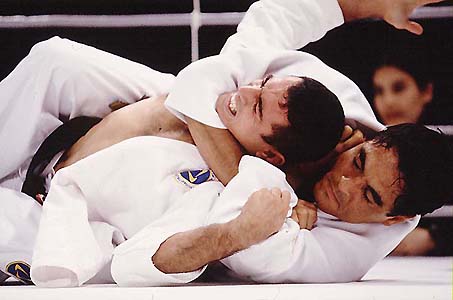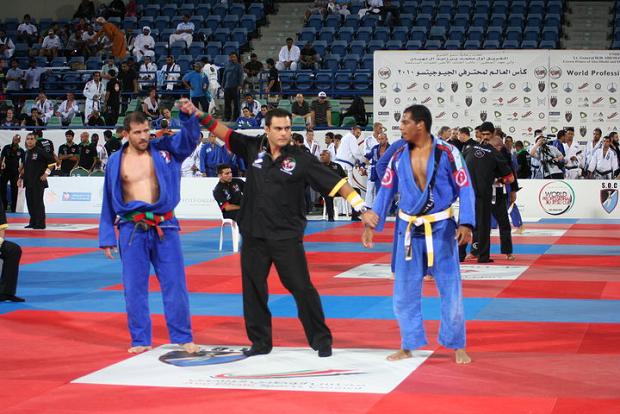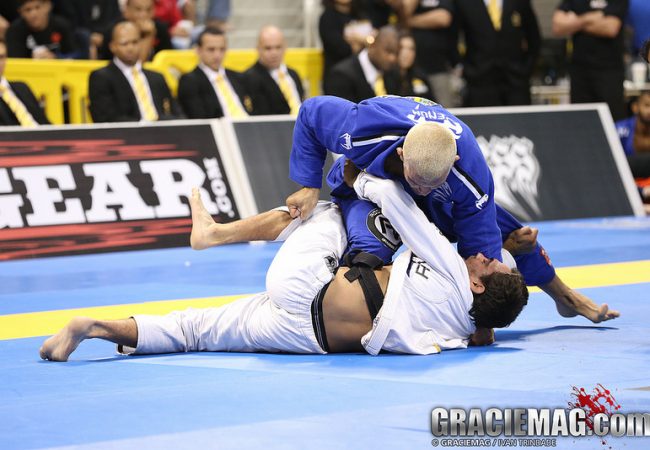
Royler doing a demonstration with brother Rickson. Photo: Susumo Nagao
Ever since he was a kid, Royler Gracie has been used to the challenges and matches where his family members and he himself defend Jiu-Jitsu’s effectiveness. The so-called “vale-tudo” evolved and is now known as MMA, a sport in ascension in terms of fan numbers throughout the planet.
Starting in 1993, Jiu-Jitsu gained worldwide acclaim with Royce Gracie and the UFC, and other representatives who made their names in the rings and cages. During the initial stage, each fighter defended his style.
Nowadays, the burliest of bone crunchers practises a variety of techniques. Keen to it all, like Brock Lesnar and Fabrício Werdum’s submissions of Shane Carwin and Fedor Emelianenko, respectively, Royler has the wise eye of someone who experienced the evolution of the sport. The lesson: much has changed, but Jiu-Jitsu is still fundamental.

Royler's brother Royce putting Jiu-Jitsu to use in MMA. Photo: Susumo Nagao
“I’m an unconditional Jiu-Jitsu fan. There was a revolution in MMA and martial arts thanks to Jiu-Jitsu. Someone who doesn’t know how to grapple won’t be able to save himself. To do MMA without knowing how to handle yourself on the ground is impossible. Even if he doesn’t want to, he has to learn to fight on the ground,” he remarks.
“It’s been some years now that we’ve been proving it and now it has become even clearer. The great fighters, even the divisional champions, are Jiu-Jitsu black belts. Even when they are strikers or wrestlers. There’s Anderson Silva, Wanderlei, Demian Maia, Georges St.-Pierre and even Brock Lesnar is learning, among so many others,” says Royler, who points out the power of the submission hold.
“Take Brock for instance. There’s no such thing as a submission hold in wrestling, nor in karate or kickboxing. Everyone has to train grappling. It’s the path to take to become professional and improve as an MMA fighter,” he says in finishing.



